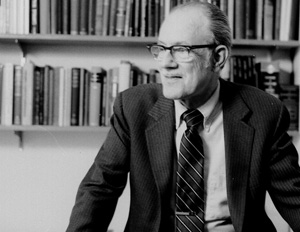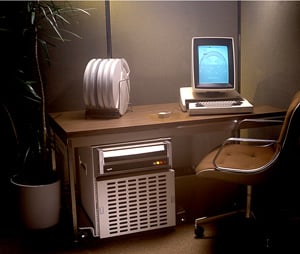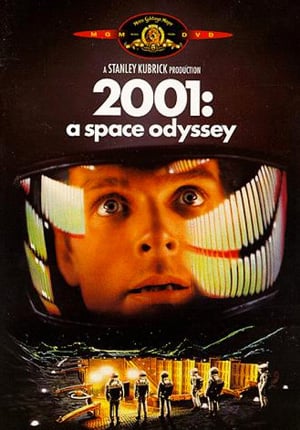Original URL: https://www.theregister.com/2011/11/28/charles_simonyi_on_word_excel_films/
Word and Excel creator: How Gates, Jobs and HAL shaped Office
Simonyi on the code, people and films that inspired Microsoft
Posted in Software, 28th November 2011 13:00 GMT
Films, according to Charles Simonyi – the man behind Microsoft's Word and Excel used by 500 million people – are great for showing the future of computing.
Simonyi reckons Kubrick's seminal 2001 a Space Odyssey from the moon-landing days of 1969 foreshadows the kind of video calls now in Skype.
Minority Report does much the same thing: in the 2002 film you see – among other delights from Philip K Dick and Steven Spielberg – the kinds of endlessly looping TV-digitised ads now pervasive in the back of cabs and on London's Underground and fingertip-based computer input now familiar on tablets and smart phones.

Charles Simonyi: Office man inspired by Kubrick
"They may not be a good indication of how the future unfolds but in terms of how the actual computes might look 10 years from now, I think movies are very good," Simonyi tells The Reg.
Films have had a profound impact on the life and work of Simonyi, now 63. And that's fortunate, given he invented something that has become so ubiquitous in computing that it has become invisible. He invented the What-You-See-Is-What-You-Get display, or WYSIWYG, in the early 1970s at the invention hothouse that is Silicon Valley's Xerox PARC.
"2001 [A Space Odyssey] was a new film in the early '70s and the displays there had a big impact on me. I also remember some science fiction I read in the late '50s that described CAD-CAM, which is a form of WYSIWYG," he tells us.
2001 was important in other ways: firing an interest in off-planetary affairs that turned Simonyi into a space tourist. He's been aloft twice with the Russian space programme.
Back to the WYSIWYG, though. This was a revolutionary creation: for the first time a computer screen could display text with formatting, and the page could be printed; also, you entered the characters via a keyboard or mouse not a series of rocket-scientist-like keyboard instructions.
Simonyi turned this into a mass-market reality at Microsoft, leading the Word and Excel teams. He joined Microsoft 30 years ago in 1981, laying the foundation of a $14bn Office cash cow. Today, there's hardly a work PC in the world not running Office, while Word and Excel have become established subliminally in our culture and lexicon, defining what we expect from word processing and spread sheeting, and short hand when talking about other software.
Thirty years on, and having made billions of dollars for Microsoft, Office is at a crossroads thanks to the web. There are echoes of the early days of Word and Excel; in the 1980s, Microsoft was just another software maker with big ambitions at the mercy of platform providers. Today, Microsoft is struggling to make its software stand out on web, against browser-based competition from the likes of ads and search Google with Docs.
Do Word and Excel have a life beyond the desktop, in the cloud and browser? "The functionality will be always needed. The form and environment may change," Simonyi says.
That said, the WYSIWYG has to evolve and become smarter, Simonyi says. To follow this idea he left Microsoft in 2002 to start Intentional Software – a 25-person company in Microsoft's Bellevue backyard that helps people design and build software. Customers include DARPA.
WYSIWYG needs to get smarter
"I learned a lot about the limitation of the WYSIWYG paradigm," Simonyi says of his two decades at Microsoft, where he'd served as director of application development, chief architect and distinguished engineer. "It is unfortunately what you see is all you get. Today we need even more – see more of the intentions behind the image."
For their shortcomings and challenges today, Word and Excel as part of Office claim 94 per cent of the office productivity market; Simonyi maintains Word and Excel deserve their success. "It's hard to find fault with them realistically," he says.
"You could say: 'I'd prefer X', but every time somebody says 'I prefer X' it has immense consequences. You'll find 100 million people who don't prefer X," he reflects.
"I really think we deserved the success," Simonyi says of Word, Excel and the Office franchise and how they've changed our lives and culture. "Word today is much more than a word processor, it's spelling, thesaurus and so on... it has changed people's spelling habits and their spelling mistakes have changed. In the old days, people used to misspell things, and today, people confuse the homonyms. The "there" as opposed to "their" is a now a common misspelling simply because of spelling correction in Office.
"The world is so much better off in having the Windows standard," Simonyi continues.
Windows-style room service
"You go to a random hotel room in the world and you are facing the TV and the alarm clock and I challenge you to get things going... these are trivial tasks: setting an alarm at seven in the morning. Same thing with the TV. At the same time you can go to the business centre and set on a machine that's orders of magnitude more complex – and yet you can immediately start using it – you can immediately... peruse your data and print out your document.
"That's because one machine is working on a fantastic standard – the GUI windows standard – whereas the other machines are pieces of crap. Can you imagine where the world would be if we took our most powerful machine, the computer, and took it back to the level of interfacing that is exhibited by the alarm clocks and TVs? We'd be early industrial age."
Others will disagree; plenty do – particularly those in the free software and open-source movement and large tech companies like IBM who like their independence. They have resented precisely this kind of cultural and technological lock-in to Word, Excel and Office.

PARC's Pake: picked to lead the future
If the 1980s and 1990s saw the rise and consolidation of Office, the 2000s were marked by reaction and opposition. Many became uncomfortable with the fact that the world's information was being locked up in a set of file formats fed and watered by just a single company: Microsoft. The growing reaction manifested the XML-based Open Document Formant (ODF) and also OpenOffice, and saw furious political battles especially in national and local governments over using ODF or Office. Ultimately, Microsoft responded with its own rival XML Office file formats.
Former competitors also continue to take issue with Office, although it might be more the Office "won" and they lost, rather than the tactics Microsoft employed, which they claim is the problem.
Novell has said in court that its briefly owned WordPerfect was left dead in the water against Word thanks to broken promises from Microsoft and a decision to deny WordPerfect's engineers access to Windows 95. Simonyi's former boss, Microsoft co-founder Bill Gates, was in court this month arguing that Microsoft hadn't acted anti-competitively and WordPerfect lost because it just wasn't as good as Word.
Did Simonyi and his coders ever imagine the trouble their creation would cause?
No. Back in the 1980s things weren't seen in these broader political or anti-competitive terms. Then, Microsoft was just another, hardworking start-up – barely five years old by the time Simonyi joined in 1981 – going up against some very, very successful dogs.
The goal was to beat killer-app spreadsheet of the day VisiCalc and Mitch Kapoor's Lotus 1-2-3, a spreadsheet app that offered integral charting/graphing and rudimentary database operations through keyboard driven pop-up menus and single-key commands. On the word side, the targets were the first commercially successful word processor from Micropro International in 1978 called Wordstar for CP/M and DOS, and – yes – WordPerfect from Satellite Systems in 1980 on Data General, DOS, Apple II and others.
"At the time we were writing programs, the last thing that crossed our minds was whether something was somehow illegal – we were improving our programs and creating more functionality," he says.
If it's impossible to imagine a world without Word, Excel and the whole Office suite, then the story of their creation and today's easy success was never a given; as with WYSWIG before them, Word, Excel and Windows struggled initially against entrenched odds.
Networking dead-end
Born in Budapest, Hungary, in 1948, Simonyi was a programming protege reputed to have written his first compiler by the time he was 16 and who slipped out from behind the Iron Curtain via Denmark during the Cold War to study in the US. Simonyi gained a Bachelor of Science degree in engineering mathematics from the University of California at Berkeley in 1972 and then a doctorate in computer science from Stanford University in 1977.
After his new employer Berkeley Computer Corp went under, Simonyi – along with the rest of company – was hired by Silicon Valley's Palo Alto Research Center (PARC), which had only just opened as Xerox PARC under George Pake with a mission to conceive the office of the future. It was a fateful hire.
Simonyi was initially engaged in building a network to connect computers, something he'd modestly christened Simonyi's Infinitely Glorious Network (SIGnet). This project failed, and the job of networking passed to Ethernet inventor Bob Metcalfe and assistant David Boggs – fathers of Ethernet and joint founders of 3Com.
WYSIWYG: low-hanging fruit
Simonyi switched to the WYSIWYG for the Xerox Alto, considered one of the first, modern personal computers. Built in 1973, the Alto is regarded as one of the first "modern" desktop PCs as it combined the mouse, Ethernet networking and GUI - all ideas that emerged from PARC research - along with a keyboard and monitor.
Simonyi tells us SIGnet had a "considerable hardware component, which I was not particularly good at developing" and gravitated to WYSIWYG with a project called Bravo, because it was "the lowest hanging and biggest fruit – a rare combination."
Simonyi built the Bravo WYSIWYG for the Alto in 1974 as a PhD project. Still, for people charged with charting the future, the PARC brass weren't exactly encouraging or supportive. Bravo had to be developed in stealth mode because of possible project overlap. Legend has it PARC saw no need for Bravo as the Alto already had an interface.
"No," says Simonyi, who corrects a myth that now lives on the internet. "The real problem was 'Polos', a complicated Nova-based office system done by the team that came from SRI [Stanford Research Institute], but you are right in that we had to do this as a subterfuge."

The Alto: a big system in its time
Simonyi got funding for experiments, not for programmers, and Bravo was coded using students from Stanford who were paid as "researchers" rather than programmers.
Proving PARC owner Xerox was not serious about the Alto as a commercial venture, it sold just 25,000 units to major customers including US aerospace behemoth Boeing.
History might have been stillborn had one of Simonyi's colleagues not treated him to a demo of VisiCalc running on a then-new Apple II. The Apple II had just been built by Steve Woz across Silicon Valley, having helped founded Apple Computer with Steve Jobs 1976.
"I realised I was a snob was when I saw VisiCalc running on the Apple. The word processing programs like that [of the time] I never took seriously because we were so much better on the Alto. But when I saw VisiCalc I said 'wow'," Simonyi tells us.
Up until seeing VisiCalc on the Apple II, Simonyi says he'd looked down on the personal computer industry because "the numbers" were just so pathetic in terms of onboard memory – a fact that severely constrained what you could achieve. "I remember Larry Tesler [PARC colleague who worked on the Gypsy word processor and Smalltalk during Simonyi's time before jumping ship to Apple] bring in a Commodore with the chuckled keyboard and it was like a toy, especially at Xerox," Simonyi says.
VisiCalc delivered what PARC still dreamed of and did so using a "very basic machine": The Apple II ran from 4k to 48k of memory versus the Alto's up to 512k.
VisiCalc, released in 1979, was a landmark app – considered a "killer app" – and it is hailed today as the first spreadsheet for the personal computer. While it wasn't the first electronic row-columnar tabulation program that existed, it stood out by being available on the PC and Mac and by being interactive "in a WYSIWYG way", co-creator Dan Bricklin reckoned. VisiCalc reputedly "provided many business people with an incentive to purchase a personal computer" or an H-P 85 or 877 calculator from Hewlett-Packard. About one million copies of VisiCalc were sold.
Simonyi imagined what was possible using the Alto and other even more powerful machines that were coming and tells us realised he had to "get involved with the personal computer arena". Based on experience, this wasn't going to be possible at PARC.
Going downhill slowly
Simonyi has said elsewhere that PARC's Xerox owner was "an old company going downhill." It wasn't just that they didn't have all the right answers to complex technology questions. "That's normal... But what bothered him the most was that they didn't know the right questions, either."
Fired up by VisiCalc, Simonyi took three important steps: the first was attending a seminar by Microsoft's then vice president of consumer products Vern Rayburn on the business opportunities of these newfangled computers. Simonyi was suitably impressed by the numbers on consumers and games and by Microsoft's language business. "I was very excited about languages and I thought I might do what ever was necessary to help with languages and the experience in apps might come in handy," he said.
Back-of-napkin time
Next, Simonyi had lunch with Ethernet man Metcalfe, who'd quit PARC in 1979 to found Ethernet shop 3Com. Simonyi considered Metcalfe suitably "off the reservation" to offer impartial and confidential advice on where to go next. On a napkin Metcalfe wrote down the names of VisiCalc's creators, the "guys" at Digital Research who sold the Control Program for Microcomputers operating system (CP/M) that was used by Intel's 8080 and the Zilog 80 microprocessors (Simonyi doesn't list the names for us but the company was created by Gary Kildall), Seymour Rubenstein, and - oh, yeah - Bill Gates. In fact: "The first guy on the list was Bill. I don't know why," Simonyi tells us.
Next, on a trip to Seattle to meet Boeing and fix a problem with its Altos, Simonyi dropped in on Microsoft, packing his portfolio. Microsoft was small enough then that you could drop in, only Simonyi had gone there under the impression that Metcalfe had arranged a meeting. "I walked in.... and Steve Ballmer was ready to see me," he says. Ballmer had only just joined Microsoft in 1980 as Microsoft's first business manager – hired by Gates.
Simonyi started work in 1981 as director of development for Word and Excel and thereby became the latest PARC person to walk out in frustration. Others, aside from Metcalfe, included PostScript creators John Warnock and Charles Geschke who founded Adobe Systems.

The future of human-computer interaction?
The attitude at Microsoft couldn't have been more different: competitive, commercial, hungry and focused. "I was incredibly impressed by Bill's vision and drive – and there were plenty of resources for the "low-hanging fruit" if we focused on them. Microsoft had been in business for five years and was very profitable," he said.
Simonyi reckons the idea for a suite of personal productivity apps was there from the very start. "We set out to do a suite of apps and we knew what those applications would be," he says: "We didn't know about PowerPoint, but certainly the anchors were spreadsheet and editor, business graphics, database, chart, file and that was pretty much it.
"We wanted to have a common user interface – this was before Windows. We were very much aware of the visual UI more than practically anyone and we were biding our time for the hardware to catch up to the software possibility," Simonyi tells us. "We bought a Xerox Star so everybody at the organisation could understand the direction we were going in."
The Xerox 8010 Star Information System - known simply as the Star - was PARC's successor to the Alto in 1981, building on concepts, its hardware and software laid down by the Alto. The Star featured a 384K memory expandable to 1.5Mb, a two-button mouse, Ethernet networking, micro-sliced processor, 17-inch display and Star desktop and application suite for text editor, graphics or spreadsheet. Documents could be placed on the desktop, filed or binned, icons arranged, and you could perform simple commands like move, copy, open and delete.
Around that time, Microsoft had a Word app - MultiTools for Word - and a spreadsheet, Multiplan, but no Windows and Microsoft was writing its apps for other people's platforms. This was a time when the PC platform wars raged with no clear winner.
So many platforms, just one Microsoft
Microsoft Excel precursor Multiplan ran on MS-DOS, used by IBM on its PCs, Mac, CP/M, Xenix, Commodore 64 and other operating systems in 1982. Simonyi's Excel spreadsheet debuted on Apple's Mac in September 1985 – Jobs and Woz released the Mac in January 1984 – using the Excel name for the first time: Excel for Mac. Windows 1.0 didn't arrive until November 1985, with Multiplan re-written and re-branded Excel in 1987.
Word predecessor MultiTools for Word was written for Xenix in 1983 and ported to MS-DOS for IBM in 1983, Mac in 1985 and others before being re-written for Windows in 1989.
Office didn't come into existence until 1990, a marketing touch from the ex-Apple software development manager turned director of applications marketing Jeff Raikes. Simonyi doffs his engineering hat to Raikes. "Office was a brilliant marketing idea," he says of the bundle that threw together two of the most commonly performed desktop work activities.
"The acquisition of PowerPoint was an important addition," he adds. Microsoft bought PowerPoint with the acquisition of Forethought in 1987. Raikes' marketing team also came up with the Excel name, which Simonyi says was an important concept in the 1980s.
The Steve Jobs factor
When it comes to those names, "Word" was always in the brand plan - it dated from the MultiTools name - but Excel was an invention. Simonyi says marketing had decided the spreadsheet was going to be such a hit that it deserved a special name: "In general it was very difficult to get rights for names, so it was Microsoft-something, like Microsoft Word, Microsoft Excel," Simonyi recalls.
Windows on the PC was another turning point for the Office apps; however, it was the Mac really paved the way. "The turning point was the Mac for Office and for Microsoft it was Windows," Simonyi says. "For Office the turning point was the Mac, which helped Windows a lot because it re-enforced our belief the visual UI was where it was at."
The Mac had a big advantage over the PCs of the time: small memory and fast chip which made the GUI and WYSIWYG fast to load and smooth to run.

An inspiration? Bill Gates was hands on
"If it [the machine] had a faster chip it [Excel] could live in a small memory more comfortably than Lotus and the UI acquired new skills - skills we had - of performing a dialogue with the user in a new way with drop down ways, with mouse pointing and with undoable requirement.
"These were almost luxury and non-existent features that became almost most standard. We were prep for that and we could accommodate them because that's what that's where we were shooting for. The hardware caught up and our software was success at cramming that functionality into smaller memory."
It's ironic that the Mac played a pivotal role in this tale, from that first demo of VisiCalc to the debut of Excel. What does Simonyi make of Steve Jobs' contribution to computing, now he's gone? Simonyi is respectful but measured, and possibly a little partisan.
Calling Jobs an independent force, Simonyi concludes: "He [Jobs] was still important but by no means unique, much to his chagrin. WYSIWYG came from Parc, not from Apple or Microsoft as Bill pointed out many times."
Mac might have broke Word and Excel to the world, but that once-dead-now-revived Novell antitrust case against Microsoft now confirms, it was the special relationship between Windows and the Office apps that proved successfully symbiotic. At a time when there were so many different operating systems in the mix and many very successful document and spreadsheet apps, Office helped Windows stand out and vice versa.
Thanks to the GUI, Word could display simple formatting like bold or italic while the use of a mouse and simple commands via the keyboard meant things just worked: no memorising of complex instructions or fingers akimbo, straddling far too many keys.
"Quite a few of people from our business went to work on Windows. Our success on the Mac verified Bill's vision that the GUI is the future. All that remained was to put the GUI on the most efficient and popular and high volume platform, which was the Intel PC." Simonyi adds: "The Intel PC had to grow a little bit, too."
"We suffered a lot of multiple platforms," Simonyi recalls of those early platform wars. "We had a contract with IBM that they made it available on their PC but because of their marketing considerations they wanted to be sure the software ran on the smallest machine they made – a 32k machine. They even threatened [to ask that] it must run on 16K machine. With great difficulty, we were able to run on the 32K machine meanwhile Lotus could consume 256k."
A-team MIA
Hubris also played its part as competitors blundered, giving Microsoft an edge as it delivered Windows. Lotus followed 1-2-3 with the clunky Jazz, priced too high, breaking the brand, and loading the software with plenty of unfriendly features. Lotus sold 20,000 copies of Jazz versus Microsoft's 200,000 for early copies of Excel.
"They didn't have their A-team working on it, is what we could figure," Simonyi says. "The next version of Excel was on Windows. So we had the advantage and we dominated from then on."
He adds Excel was the result of several previous false starts to challenge Lotus 1-2-3.
WordPerfect, meanwhile, got more sophisticated by adding lots of formatting but on the small machines of the day this code soup was too rich to deliver a smooth WYSIWYG experience.
A lot has been written about this era, those go-getting, early start-up days of the 1980s and the 1990s when Word, Excel and Windows were new and the future was not written. When Microsoft was at the mercy of others, and took the decision to go from apps to apps and operating system..
Simonyi credits much of the software's success to Gates, whom he called "critical at all points directing and re-directing efforts". That may be so, but an appreciation of film helped, too. ®